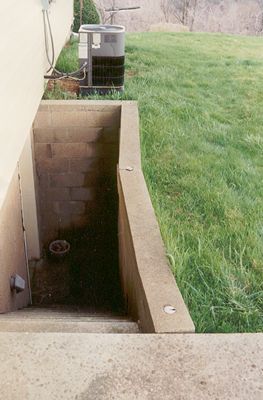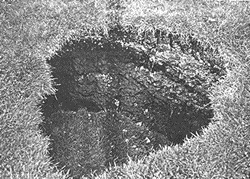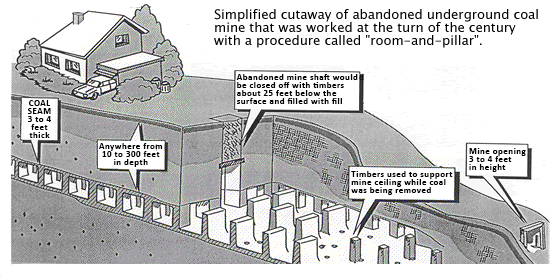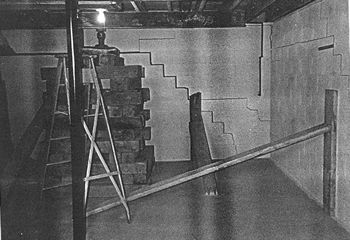Definitions
Similar to hydrostatic pressure in that the soils put pressure on the structure causing inward deflection of the walls. Horizontal cracks are typical.
Similar to frost heave but this is an action that takes place over time and seasons. The freezing and thawing breaks down the soils and pressure can affect the foundation.
Occurs as a result of soil and water freezing and expanding. The expansion can cause the foundation to heave upward or move inward.
The filling in of the mine void with a concrete-based material. This is usually done by the Department of Natural Resources.
Occurs when the soils around a structure become saturated putting pressure on the structure. It results in inward movement of below-grade walls. Horizontal cracks in mortar joints are typical with inward deflection of the walls.

Improperly Compacted Fill
Occurs when a home is built on fill material that is not properly compacted. The fill material will settle over time, causing damage to the structure.
The slipping of a slope of a hill which causes lateral or horizontal movement to the structure.
Mechanics of Mine Subsidence
Subsidence, in the context of underground mining, is the lowering of the Earth's surface due to collapse of bedrock and unconsolidated materials (sand, gravel, salt, and clay) into underground mined areas.
Pit (sinkhole/pothole) subsidence is characterized by an abrupt sinking of the surface, resulting in a circular steep-sided, craterlike feature that has an inward drainage pattern. Pit subsidence is sometimes referred to as sinkhole subsidence or pothole subsidence. Pit-subsidence features generally do not hold water because the pit drains into the underlying mine.

Sag subsidence is a gentle, gradual settling of the surface. Sag-subsidence features may fill with water if the surface of the subsidence intersects the water table.
Mine subsidence is controlled by many factors, including height of mined-out area, width of unsupported mine roof, thickness of overburden, competency (strength) of bedrock, pillar dimensions, hydrology, fractures/joints, and time. The vertical movement of subsidence is proportional to the height of the extraction area.

* GEOFACTS No. 12 published by the Ohio Department of Natural Resources Division of Geological Survey
Lateral or vertical movement that occurs when an underground mine collapses into itself causing stresses to the surface above. The movement generally occurs above man-made underground coal mines, clay mines, limestone mines and salt mines. Mine subsidence does not include loss caused by earthquake, landslide, volcanic eruption, or collapse of strip mines, any surface mines, storm and sewer drains, or rapid transit tunnels.
A drop in the foundation below the original level.
Supporting the structure to protect it from sustaining additional damage. This can be done if necessary once mine subsidence has been determined as the cause of damage.


Occurs when the soil either has an abundance of moisture or a drought like condition causing the soils to expand or shrink.
An engineer will determine a location close to the area of concern and have a hole drilled (similar to a water well). Samples can be taken of the subsurface strata for identification and mapping of the strata layers. Mine voids, coal seams, and saturated soils can be located. This is the most definitive form of investigation.
An investigative tool used usually after a house has been determined to have been affected by mine subsidence or as a tool to monitor the house for movements during the investigation. Sensitive surveying equipment is used to survey the house from a "secure" point. The house will be surveyed for a period of time with several readings over a period of time. The engineer will be able to determine if the house is sustaining movement.
|